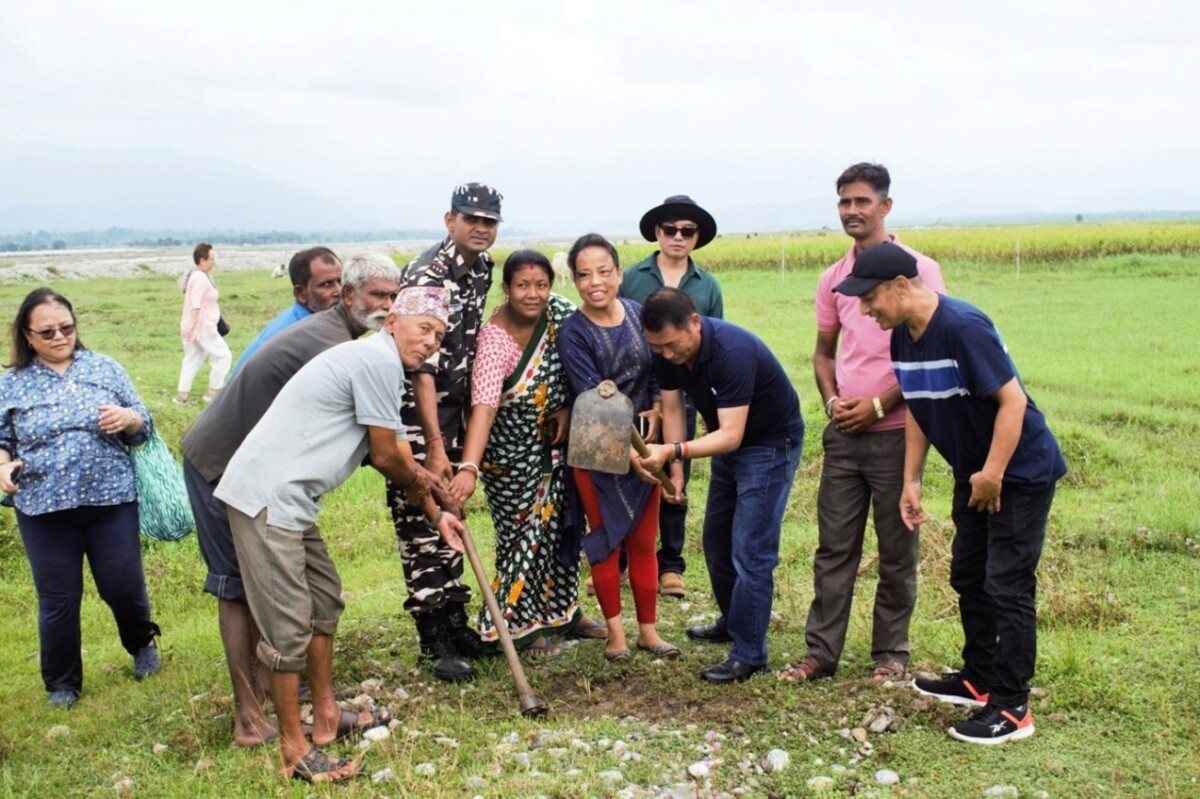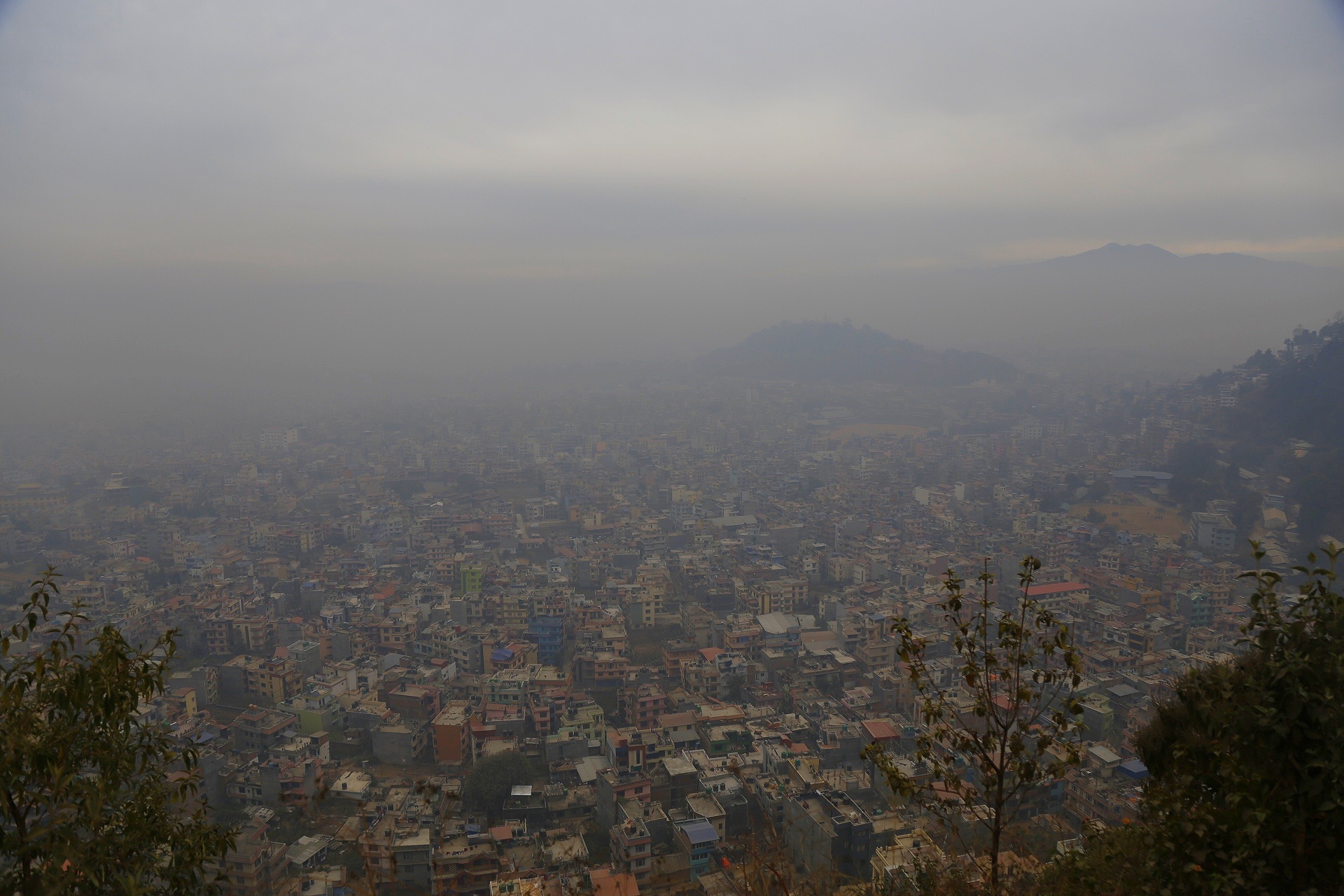Report on the Efficacy of Virtual Green Spaces for Pain Management and its Alignment with Sustainable Development Goals
Executive Summary
This report analyzes an experimental study investigating the impact of virtual reality (VR) environments on human pain perception and emotional state. The study demonstrates that a brief, 4-minute virtual walk in a green garden environment significantly reduces the intensity and unpleasantness of pain, increases positive emotions, and decreases negative emotions. In contrast, a virtual walk in an urban environment yielded no significant changes. These findings provide critical evidence supporting several United Nations Sustainable Development Goals (SDGs), primarily SDG 3 (Good Health and Well-being), SDG 11 (Sustainable Cities and Communities), and SDG 9 (Industry, Innovation, and Infrastructure). The research highlights the potential of innovative, non-pharmacological interventions for pain management and underscores the intrinsic value of green spaces for public health, whether accessed physically or virtually.
1.0 Introduction: Contextualizing Pain Management within Sustainable Development
Pain is a universal human experience and a significant global health challenge. Addressing it effectively is crucial for achieving sustainable development, as chronic pain and poor mental health impede social and economic progress. This study explores the intersection of environment, technology, and health, providing insights relevant to a sustainable future.
1.1 The Global Challenge of Pain and Well-being (SDG 3)
SDG 3: Good Health and Well-being aims to ensure healthy lives and promote well-being for all at all ages. A key target is the promotion of mental health. Pain is a complex experience with both sensory and emotional dimensions, directly impacting well-being. This study investigates an innovative, non-pharmacological approach to pain relief, contributing to accessible and sustainable health solutions that can reduce reliance on medication and improve quality of life.
1.2 The Role of Environment in Health: Green vs. Urban Spaces (SDG 11)
SDG 11: Sustainable Cities and Communities includes the target of providing universal access to safe, inclusive, and accessible green and public spaces. The profound connection between human health and the natural environment is well-documented. This research provides a comparative analysis between a nature-based environment and an urban one, reinforcing the hypothesis that green spaces offer restorative benefits not found in typical urban landscapes. The findings advocate for the integration of green infrastructure into urban planning to foster healthier communities.
1.3 Technological Innovation for Health Solutions (SDG 9)
SDG 9: Industry, Innovation, and Infrastructure encourages the enhancement of scientific research and the upgrading of technological capabilities. This study exemplifies this goal by leveraging immersive Virtual Reality (VR) technology to create therapeutic environments. By simulating the experience of nature, VR offers a scalable and accessible solution for individuals who may be unable to access physical green spaces, such as hospital patients or those with mobility limitations, thereby showcasing innovation for societal benefit.
2.0 Study Objectives and Methodology
The primary objective was to assess the effects of a virtual walk in a green versus an urban environment on pain perception and affective state.
2.1 Research Design
An experimental study was conducted with 81 healthy adults, randomly assigned to one of two groups:
- Green Space Group (n=40): Participants took a virtual walk in a therapeutic garden.
- Urban Space Group (n=41): Participants took a virtual walk in a city environment.
Measurements were taken before (pre-test) and after (post-test) a 4-minute immersive VR walk.
2.2 Variables and Measurement
The following dependent variables were measured:
- Pain Tolerance Threshold: Assessed using a TSA-II neurosensory analyzer delivering thermal stimuli.
- Pain Intensity: Rated on a Visual Analog Scale (VAS).
- Pain Unpleasantness: Rated on a Visual Analog Scale (VAS).
- Emotional State: Intensity of positive and negative emotions rated on a VAS.
2.3 Virtual Environments
- Green Space: A virtual therapeutic garden designed with restorative features, including diverse plant life, a water feature, and naturalistic pathways.
- Urban Space: A realistic urban landscape characterized by concrete structures, asphalt, and minimal, distant greenery.
3.0 Key Findings and Analysis
The results demonstrate a clear divergence in outcomes between the two environmental conditions, strongly supporting the hypothesis that virtual green spaces have a beneficial effect on pain perception.
3.1 Impact on Pain Perception (Intensity and Unpleasantness)
- Green Space Group: Experienced a statistically significant reduction in pain unpleasantness. A decrease in pain intensity was also observed.
- Urban Space Group: Showed no significant change in pain intensity or unpleasantness. Post-intervention, this group reported significantly higher pain intensity than the Green Space group.
3.2 Impact on Pain Tolerance
Pain tolerance thresholds remained at a similar level before and after the virtual walk in both the Green and Urban Space groups. No statistically significant differences were found between the groups for this measure, suggesting the intervention primarily affects the subjective and emotional experience of pain rather than the physiological tolerance limit.
3.3 Impact on Emotional State
- Green Space Group: Reported a significant increase in positive emotions and a significant decrease in negative emotions following the virtual walk.
- Urban Space Group: Experienced no statistically significant changes in emotional state.
4.0 Discussion: Implications for Sustainable Development Goals
The study’s findings have direct and practical implications for advancing the Sustainable Development Goals.
4.1 Advancing SDG 3: Good Health and Well-being
The demonstrated analgesic and mood-enhancing effects of virtual nature present a viable, non-pharmacological tool for pain management. This aligns with SDG 3 by:
- Offering a safe and accessible intervention for acute pain relief.
- Providing a method to improve the mental well-being of patients, especially those in confined settings like hospitals.
- Reducing potential over-reliance on pharmacological pain treatments.
4.2 Informing SDG 11: Sustainable Cities and Communities
The stark contrast in outcomes between the green and urban environments provides compelling evidence for the public health benefits of nature. This supports SDG 11 by:
- Highlighting the necessity of integrating green spaces into urban design to promote psychological restoration and well-being.
- Demonstrating that even minimal exposure to nature, whether real or virtual, is sought after for its restorative effects, as seen when participants in the urban group paused near any available greenery.
4.3 Leveraging SDG 9: Innovation for Societal Benefit
The use of VR technology as a delivery mechanism for therapeutic nature exposure is a prime example of innovation aligned with SDG 9. This approach:
- Applies advanced technology to address a pressing health challenge.
- Creates a scalable “virtual horticultural therapy” that can be deployed in diverse settings, from hospitals to homes.
- Opens new avenues for research and development in digital therapeutics.
5.0 Conclusion and Recommendations
5.1 Summary of Findings
Interaction with a virtual green environment is an effective method for relieving pain, primarily by reducing its intensity and unpleasantness and improving the associated emotional state. This effect is not observed in a virtual urban environment, underscoring the unique restorative properties of nature. The study confirms that even a simulated connection to nature can yield significant psychological and analgesic benefits.
5.2 Recommendations for Policy and Practice
- Healthcare Providers: Should consider integrating VR-based nature experiences as an adjunct therapy for pain management, particularly for patients undergoing painful procedures or those with limited access to outdoor spaces.
- Urban Planners and Policymakers: Must prioritize the creation and preservation of accessible green spaces within cities as a fundamental component of public health infrastructure, in line with SDG 11.
- Technology Developers: Should continue to develop and refine immersive therapeutic applications, collaborating with healthcare professionals to ensure efficacy and accessibility.
Analysis of Sustainable Development Goals in the Article
1. Which SDGs are addressed or connected to the issues highlighted in the article?
-
SDG 3: Good Health and Well-being
This is the primary SDG addressed. The article’s central theme is the investigation of non-pharmacological methods for pain management and the improvement of emotional states. It directly explores how environmental factors, simulated through Virtual Reality (VR), can “promote mental health and well-being.” The study assesses pain intensity, unpleasantness, tolerance, and emotional responses, all of which are key components of physical and mental health. The discussion also touches upon VR as a potential adjunct or alternative to pharmaceutical treatments, which is relevant to providing quality healthcare.
-
SDG 11: Sustainable Cities and Communities
The article connects to this goal by contrasting the psychological effects of a “virtual green garden” with a “virtual urban environment.” The findings, which show that green spaces reduce pain perception and improve mood while urban spaces do not, provide a strong evidence-based argument for the importance of green spaces in urban planning. It directly supports the rationale behind creating “inclusive and accessible, green and public spaces” to enhance the well-being of city dwellers.
-
SDG 9: Industry, Innovation, and Infrastructure
This goal is relevant through the article’s use of innovative technology. The study employs a sophisticated VR system (“Oculus Rift,” “Unreal Engine 5”) as a research and therapeutic tool. This represents the application of “scientific research” and advanced technology to address a health challenge (pain management). The research itself, funded by a national science grant, contributes to the body of knowledge that drives technological and industrial advancements in the healthcare sector.
-
SDG 15: Life on Land
The article indirectly relates to this goal by highlighting the intrinsic value of natural ecosystems for human well-being. It discusses concepts like “biophilic reaction” and “Stress Reduction Theory,” which posit an inherent human connection to nature. By demonstrating that even a virtual simulation of a green environment has therapeutic benefits, the study underscores the importance of protecting and restoring terrestrial ecosystems, as their features provide essential, though often unquantified, services to human health.
2. What specific targets under those SDGs can be identified based on the article’s content?
-
SDG 3: Good Health and Well-being
- Target 3.4: “By 2030, reduce by one third premature mortality from non-communicable diseases through prevention and treatment and promote mental health and well-being.” The study’s aim to find effective methods to “relieve pain,” reduce its “unpleasantness,” and improve emotional state (“increase in positive emotions and decrease in negative emotions”) directly contributes to the promotion of mental health and well-being.
- Target 3.8: “Achieve universal health coverage, including… access to quality essential health-care services…” The article’s “Practical implications” section suggests that VR can be an “effective method for pain relief,” especially for “bedridden patients” or when pharmaceuticals are contraindicated, thus expanding access to alternative, quality healthcare interventions.
-
SDG 11: Sustainable Cities and Communities
- Target 11.7: “By 2030, provide universal access to safe, inclusive and accessible, green and public spaces…” The entire experimental design, comparing a “Green Space” with an “Urban Space,” is built around this concept. The conclusion that “natural settings exhibited a clear advantage” in providing analgesic effects reinforces the necessity of integrating green spaces into urban design for public health and well-being.
-
SDG 9: Industry, Innovation, and Infrastructure
- Target 9.5: “Enhance scientific research, upgrade the technological capabilities… including… encouraging innovation…” The study is a direct example of this target in action. It is a piece of scientific research, funded by the “National Science Center,” that uses innovative VR technology to explore new therapeutic pathways.
-
SDG 15: Life on Land
- Target 15.9: “By 2030, integrate ecosystem and biodiversity values into national and local planning…” The study’s findings quantify the “value” of a green ecosystem in terms of health outcomes (reduced pain, improved mood). The discussion of “Biophilia Theory” and the practical implications for hospital and urban design are arguments for integrating these ecosystem values into development and planning processes.
3. Are there any indicators mentioned or implied in the article that can be used to measure progress towards the identified targets?
While the article does not use official SDG indicators, it employs several specific, quantifiable metrics that serve as proxies or direct measures of progress toward the identified targets.
-
For SDG 3 (Targets 3.4 & 3.8):
The article uses several clinical and self-reported indicators to measure health and well-being:
- Pain Intensity and Unpleasantness: Measured using the Visual Analog Scale (VAS), providing a quantitative score from 0 to 10. The results show a decrease in these scores for the Green Space group.
- Emotional State: The intensity of positive and negative emotions was measured on a VAS scale, showing an increase in positive and a decrease in negative emotions in the green environment.
- Pain Tolerance Threshold: Objectively measured using a “TSA-II neurosensory analyzer,” which determines the temperature at which a stimulus is considered unbearable.
-
For SDG 11 (Target 11.7):
The primary indicator is the experimental condition itself:
- Type of Environment: The study uses the binary variable of “Green Space” (simulating an accessible green area) versus “Urban Space” (simulating an area with limited greenery) to measure impact. The superior outcomes in the Green Space group serve as an indicator of the benefit of such spaces.
- Qualitative Preference: The article notes that “a significant number of participants from the urban group… paused… in a place where they encountered any greenery.” This observation is a qualitative indicator of the human need and preference for green spaces, even minimal ones, within urban settings.
-
For SDG 9 (Target 9.5):
The methodology and context of the study provide indicators of innovation and research:
- Application of Technology: The use of “Oculus Rift VR system,” “Unreal Engine 5,” and a “TSA-II neurosensory analyzer” are indicators of the application of advanced technology in scientific research.
- Research Funding: The acknowledgment that the research was “funded by National Science Center, grant number SONATA…” is a direct indicator of public investment in research and development.
-
For SDG 15 (Target 15.9):
The study’s outcomes serve as indicators of the value of ecosystems:
- Quantified Health Benefits: The measured reduction in pain and improvement in emotional state are quantifiable indicators of the psychological “services” and “values” that green ecosystems provide, which can be used to justify their integration into planning.
4. Table of SDGs, Targets, and Indicators
| SDGs | Targets | Indicators Identified in the Article |
|---|---|---|
| SDG 3: Good Health and Well-being |
3.4: Promote mental health and well-being.
3.8: Access to quality essential health-care services. |
|
| SDG 11: Sustainable Cities and Communities | 11.7: Provide universal access to safe, inclusive and accessible, green and public spaces. |
|
| SDG 9: Industry, Innovation, and Infrastructure | 9.5: Enhance scientific research and encourage innovation. |
|
| SDG 15: Life on Land | 15.9: Integrate ecosystem and biodiversity values into national and local planning. |
|
Source: nature.com







